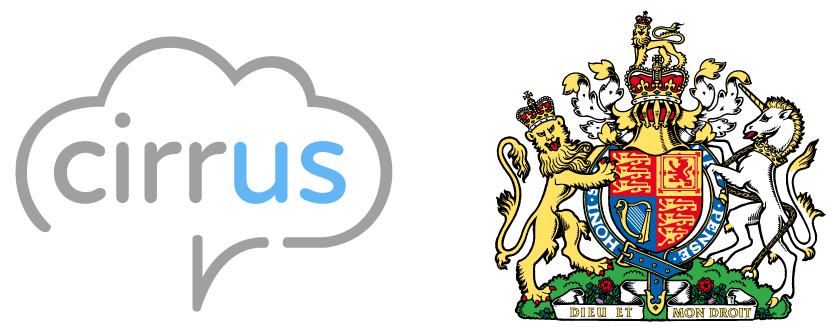This post was first published on 365retail.co.uk.
Navigating the rollercoaster of customer expectations is often a bit like walking a tightrope for retailers. Seasonal demand stands out as a challenging time with wildly fluctuating orders for stock or services. Yet potentially it can be a very rewarding period for sales if forecast and managed correctly. In this article, we’ll explore the intricacies of seasonal demand, its effects on retailers, and practical strategies for tackling these challenges. We’ll also highlight the crucial role that contact centre solutions, such as those offered by Cirrus, play in helping retailers optimise their operations and provide exceptional customer service during peak seasons.
What Is Seasonal Demand?
Seasonal demand is the changes in consumer appetite that naturally occur at different times of the year, such as around Christmas or Black Friday. Climatic conditions favouring specific products is another example – think ice cream in summer or parkas and umbrellas in winter. Another instance is back-to-school shopping when children return to the classroom after summer.
These fluctuations have their roots entwined with consumer preferences and behaviours stemming from cultural, economic, or climatic aspects. There are clear instances when certain products become hot commodities with surging sales while others drop into relative obscurity. It’s human desire or need expressed through shopping that is considered to be seasonal demand.
Affecting all sectors, this phenomenon challenges retailers worldwide, driving them to stay on top of trends, customer preferences, and shifting moods. It’s imperative for every forward-thinking retailer to not just understand, but also manage seasonal demand.
To examine it further and peek into how clever handling can convert challenges into opportunities, let’s examine how retailers overcome the challenges of seasonal demand.
Causes of Seasonal Demand Fluctuations
Seasonal demand fluctuations result from environmental, social, and regulatory factors that influence consumer behaviour. The key contributors include the following.
Natural and Climatic Shifts
Changing seasons impact preferences, particularly in the fashion and food industries, where demand can evolve dramatically from season to season. For instance, swimwear is popular in warm weather while wool coats are essential in winter.
Cultural and Festive Events
Holidays like Christmas, Halloween, Diwali, or Valentine’s Day boost related product purchases. Black Friday and Cyber Monday also lead to spikes in sales for discount-hungry consumers.
Educational Schedules
Back-to-school times often drive a peak period of heightened retail activity as parents rush to get school supplies and stationery.
COVID-19 Restrictions
The pandemic caused unexpected and seismic shifts, with homeware and fitness equipment sales surging while sales of evening wear dropped due to lockdowns.
Economic Circumstances
Finally, periods of economic prosperity will unsurprisingly increase retail sales whereas recessions lead to less spending.
Understanding these causes enables retailers to better anticipate and plan for seasonal demand. Let’s look at some examples of seasonal products.
Examples of Seasonal Products
Seasonal products often experience a spike in demand during specific periods of the year. One classic example of seasonal products is Christmas trees and decorations each December as people decorate their homes for this holiday.
Swimwear and sunscreen sales skyrocket during the summer months. School supplies sales surge in late summer or early autumn, and winter clothing flies off the shelves in autumn. Pumpkin-spiced lattes may become more popular around Halloween or as the weather gets cooler.
It’s vital to recognise seasonal patterns to meet consumer wants and needs, which have a marked effect on retailers.
Impact of Seasonal Demand on Retailers
Seasonal demand profoundly impacts retailers. It can offer sales boosts, increase profits, boost brand recognition, and increase customer loyalty.
However, seasonal demand fluctuations also pose potential risks.
- Understocking and Overstocking: Overstocking items can lead to waste and tie up valuable resources whereas understocking can harm sales and reputation.
- Operational Disruptions: A sudden surge in demand necessitates a rapid response across all operations.
- Price Wars: Increased competition during peak season can lead to aggressive discounting eating into profit margins.
Retailers must weigh up benefits and challenges and strive for a healthy balance.
“Seasonal demand presents both an exciting opportunity and a formidable challenge for retailers,” says Jason Roos, CEO of Cirrus, a leading provider of contact centre solutions. “In the digital era, customer expectations are higher than ever, with a desire for quick, effective, and personalised service being paramount. During peak seasons, the pressure on customer service channels can skyrocket, often becoming the frontline for customer satisfaction and brand loyalty.”
Overcoming Seasonal Demand Challenges
Seasonal demand can be challenging for retailers, and overcoming these challenges requires planning and effective tools. Retailers can adopt the following approaches.
Forecasting Seasonal Demand
Leveraging data to make accurate predictions based on sales and market trends can assist the decision-making process. Such analysis allows retailers to anticipate what products will be sought after during different times of the year.
However, predicting seasonal demand is actually more complex than just reviewing last year’s sales. Adjustments must often be made to account for factors like weather and global events.
Competing During Seasonal Demand Fluctuations
Standing out from the crowd becomes crucial for businesses during peak seasons. This can be achieved by:
- Offering discounts or promotions
- Upgrading product presentations
- Loyalty programs encourage repeat purchases by offering special deals.
It’s important to stay up-to-date with developments that might affect the retail landscape, and learning from competitors can be helpful.
Optimising Inventory Levels
Careful inventory management is vital during peak seasons. Overstocking ties up valuable resources and increases storage costs, whereas understocking means missed profit opportunities and customer dissatisfaction when items are sold out.
Projected demand must match the supply. This means continuously monitoring inventory levels and adjusting as needed.
Maximising Profits
Beyond regular merchandise sales, maximising profits during peak seasons depends on diversifying income streams and optimising existing processes. Some examples of innovating in this space are:
- Warranty extensions
- Supplementary accessories
- Express delivery.
Consider peak times a golden opportunity for establishing new customer relationships. One-off buyers might evolve into loyal customers if their first experience is enjoyable, and it’s essential to position your business optimally at these periods.
Overcoming seasonal demand challenges takes vigilance and strategic thinking. But armed with forecasting tools, careful inventory management procedures, and an understanding of the competition, retailers can turn seasonal consumer behaviour shifts into opportunities.
Roos emphasises that the key to managing this surge is not just in robust forecasting and inventory management, but also in deploying flexible, scalable, and intelligent customer service solutions. “Retailers need to harness technology that can seamlessly scale up during high-demand periods. Cloud-based contact centres, AI-driven chatbots, and advanced analytics can play a pivotal role in ensuring customer queries are addressed efficiently and sales opportunities are not missed.”
Technology for Managing Seasonal Demand
Technology plays a critical role in handling the seasonal demand as it helps with predicting trends and can inform decision-making and strategy-creation processes. Here are some possible solutions.
Point-of-Sale Systems
POS systems can be beneficial tools for retailers navigating seasonal demands as they offer valuable insights into customer behaviour patterns.
AI-Powered POS Software
AI can furnish precise forecasts using predictive analytics, helping retailers meet their clientele’s needs more accurately during high-demand seasons. The combination of AI and POS systems is becoming popular, as it can provide actionable stock management data.
Inventory Management Systems With Multi-channel Integration
Seasonal change can bring about increased multi-channel sales, and a system that integrates cross-platform activities offers full visibility into stock levels.
Dynamic Pricing Ecommerce Platforms
These platforms can increase agility during peak times when price sensitivity among customers lessens, which can improve profit margins while preserving competitiveness.
CRM Systems
Robust CRMs help keep existing customers engaged while attracting new ones via personalised strategies based on buying history and preferences.
Leveraging these technological solutions helps retailers navigate seasonal challenges, as they offer significant ways to stay ahead of the curve by enabling proactive measures and flexible responses to fluctuating market dynamics.
We’ll now explore best practices and tips for successfully overcoming seasonal challenges.
Best Practices for Overcoming Seasonal Demand Challenges
Navigating seasonal demand poses several potential hurdles. However, proactive retailers can turn fluctuations into opportunities by implementing best practices that have demonstrated effectiveness. Here are some strategies to help retailers address seasonal demand challenges.
Use Sales Data
Historical sales data from past seasons can provide rich insights into what worked well and what didn’t. This knowledge forms a crucial resource when strategising for upcoming seasons.
Strategic Marketing
Once you’ve identified potential high-demand products for a given season, create engaging campaigns around them in advance. This can stimulate interest and early purchases.
Advanced Planning
Peak times can often mean tight deadlines. Advanced planning for urgent times can mean the difference between scrambling at the last minute or smoothly rolling out operations. Companies such as Cirrus have assisted many retailers prepare and plan within tight timeframes to embrace agile planning, using CaaS and AI solutions, helping them make the most of seasonal demand peaks.
Dynamic Pricing
Adjusting price points based on supply and demand allows flexibility and ensures competitive pricing throughout various stages in the selling season, which can help maximise profitability.
Investing in Technology
Your biggest ally when dealing with fluctuating demands could be technology. Invest in AI and ML algorithms designed to improve inventory management, distribution logistics and performance metrics to meet changing demands.
Effective Supplier Communication
Maintaining clear communication with suppliers can help them allocate sufficient resources, which will help them meet your demands.
Creating a comprehensive seasonal demand strategy involves many elements, which provide a robust framework for managing fluctuations effectively. Here are some points worth considering.
- Accurate Sales Forecasting: Precisely predict customer demand during peak seasons using sales data and trends.
- Advance Procurement Planning: Identify popular items or services ahead of time to ensure timely procurement before the peak season.
- Supply Chain Flexibility: Ensure your supply chain can handle volume changes efficiently.
- Efficient Inventory Management: Maintain optimal stocks of high-demand items and limit surplus inventories of less popular products.
- Effective Stakeholder Communication: Regular communication with suppliers, staff, and customers helps manage expectations and streamline operations.
- Exceptional Customer Service: Outstanding service means repeat purchases and referrals.
- Technology Implementation: Employing digital tools can simplify forecasting, purchasing, inventory control, and overall seasonal demand management.
- Post-Peak Season Review: Analyse performance during the peak season and adjust future plans accordingly.
These elements together form a comprehensive strategy for managing seasonal demand, driving sustained growth for retailers throughout yearly cycles. It’s essential for the overall strategy to be a living, evolving document. As the brand learns and grows from each passing season, it should get better at predicting and managing seasonal demand changes, consolidating profitability irrespective of market fluctuations.
Using Data Analytics to Improve Forecasting Accuracy
Data analytics is becoming pivotal for assisting retailers with forecasting seasonal demand. Here’s how you can leverage it.
Start by diving into sales data analysis from past seasons. This helps identify patterns, trends, and behaviours that typically occur during certain periods.
Secondly, data analytics extends beyond sales data. Retailers should also consider external factors like market trends, social media conversations, changes in consumer tastes and preferences, economic indicators, and even weather patterns.
Finally, with real-time inventory tracking through advanced technologies like AI and ML algorithms, retailers can gain insights into their inventory status, allowing them to promptly adjust ordering practices.
However, interpreting and acting upon this gathered data requires engaging with predictive analytics experts. They could greatly enhance your success rate by ensuring you’re utilising your data effectively.
With effective data analysis techniques, retailers can better predict the shifts in consumer behaviour while maintaining steady profit margins throughout different seasons.
Roos adds, “Moreover, integrating real-time analytics with AI can help in predicting customer behaviour, thereby personalising interactions and offering proactive solutions. This not only enhances the customer experience but also provides invaluable insights for inventory management and demand forecasting.”
Leveraging Automation to Reduce Bottlenecks
Leveraging automation is a strategic move that can help retailers manage seasonal demand challenges, reducing operational bottlenecks, and ensuring operational efficiency when consumer activity surges.
Automation streamlines routine processes and tasks, reducing instances where human interactions can slow down or impede progress. Effective automation integrates technology into all aspects of retail management, and it can play a significant role in achieving these goals.
- Enhanced Efficiency: Automated workflows minimise manual interventions, allowing employees to focus on more critical tasks during peak seasons.
- Error Reduction: Robotics process automation diminishes the risk of errors compared to manual activities, enabling optimal performance during high-demand periods.
- Real-time Analytics: Automated data collection and analysis provide near-instant access to key information crucial for timely decisions related to stock levels, customer behaviour trends, and supply chain disruptions.
Automation may require an initial investment, but it ultimately leads to significant cost-saving through increased productivity and operational efficiencies. Advanced technology solutions like AI and ML and their applications in predictive modelling will further help refine seasonal demand forecasting capabilities. These technologies are therefore invaluable assets for retailers navigating seasonal markets.
Automation is a vital strategy that enables retailers to tackle seasonal demand fluctuations without affecting service level or operational output. Proactive retailers see automation as an essential step towards greater predictability, consistency, and stability, linking robust technology capabilities with sustained business success throughout the seasons.
Developing an Effective Communication Plan for Partners and Suppliers
Robust communication is integral to how retailers overcome seasonal demand challenges. Without proper information sharing, the retail ecosystem may suffer breakdowns, leading to missed opportunities or losses during peak seasons. A detailed communication plan can help with that, with its key aspects including the following.
- Sharing Demand Forecast. Close co-operation between retailers and suppliers is required for peak seasons. Sharing projections about upcoming fluctuations can help suppliers prepare for escalated demand levels.
- Continuous Updates. Regular updates with stakeholders on seasonal demand figures helps keep everyone in sync.
- Managing Unexpected Changes. The unpredictable nature of retail means sudden changes are inevitable. Promptly conveying such changes allows your partners and suppliers time to respond effectively without derailing processes.
- Solving Operation Bottlenecks. The information exchange in the event of bottlenecks is integral to support timely resolution, avoiding scale-up issues during peak seasonality.
Building solid partnerships relies on fostering trust through transparent and consistent information sharing, which could be achieved using emails, calls, or meetings, coupled with advanced data-sharing tools like vendor collaboration portals or supplier relationship management systems.
An effective communication plan doesn’t merely involve forecasting seasonal demand, but ensures maintaining streamlined operations during peak times, minimising disruptions. Prioritising open channels of collaboration and technological adoption helps retailers navigate seasonality hurdles.
Planning Ahead for the Next Peak Season
To effectively plan ahead for seasonal demand, it’s important to engage in strategic preparation and be proactive. Here are some proven strategies.
- Using Past Sales Data: Historical performance provides insights into what might happen in the next peak season, enabling forecasting of demand more accurately.
- Analysing Market Trends: Stay informed on how competitors are adapting to seasonal shifts, hot-ticket items emerging among consumers each year, and shifts in buyer behaviours. You can check out a recent list of latest retail CX trends here.
- Monitoring Supply Chain Dynamics: Any ongoing disruptions or adjustments in raw material supplies, manufacturing rates, or shipping schedules should also factor into your future plans.
Strategic preparation for demand surges also means liaising with suppliers and partners about expected inventory needs in advance. Communicating with distributors regarding anticipated order volumes helps ensure a seamless flow of goods during increased demand.
Technological advancements, such as integrated supply chain management tools, often offer predictive analytics features tailored explicitly towards enabling better forward-planning.
However, while technologies certainly offer unprecedented advantages in dealing with fluctuating seasonal demands, there is truly no substitute for astute business acumen honed by experience. The ability to balance reliable historical data with cutting-edge projections is key to charting a profitable course in an ever-changing retail landscape.
Roos concludes ”Retailers who leverage these technologies effectively can not only survive the seasonal spikes but can turn these periods into windows of tremendous growth and customer loyalty development. “In the end, the goal is to convert the seasonal shoppers into year-round customers. And the right mix of technology, strategy, and customer understanding is critical to achieving this.”
So, whether you’re operating a big retail conglomerate or running a boutique outlet, diligently preparing in advance for seasonal demand is the key to optimising your profits during peak seasons.




